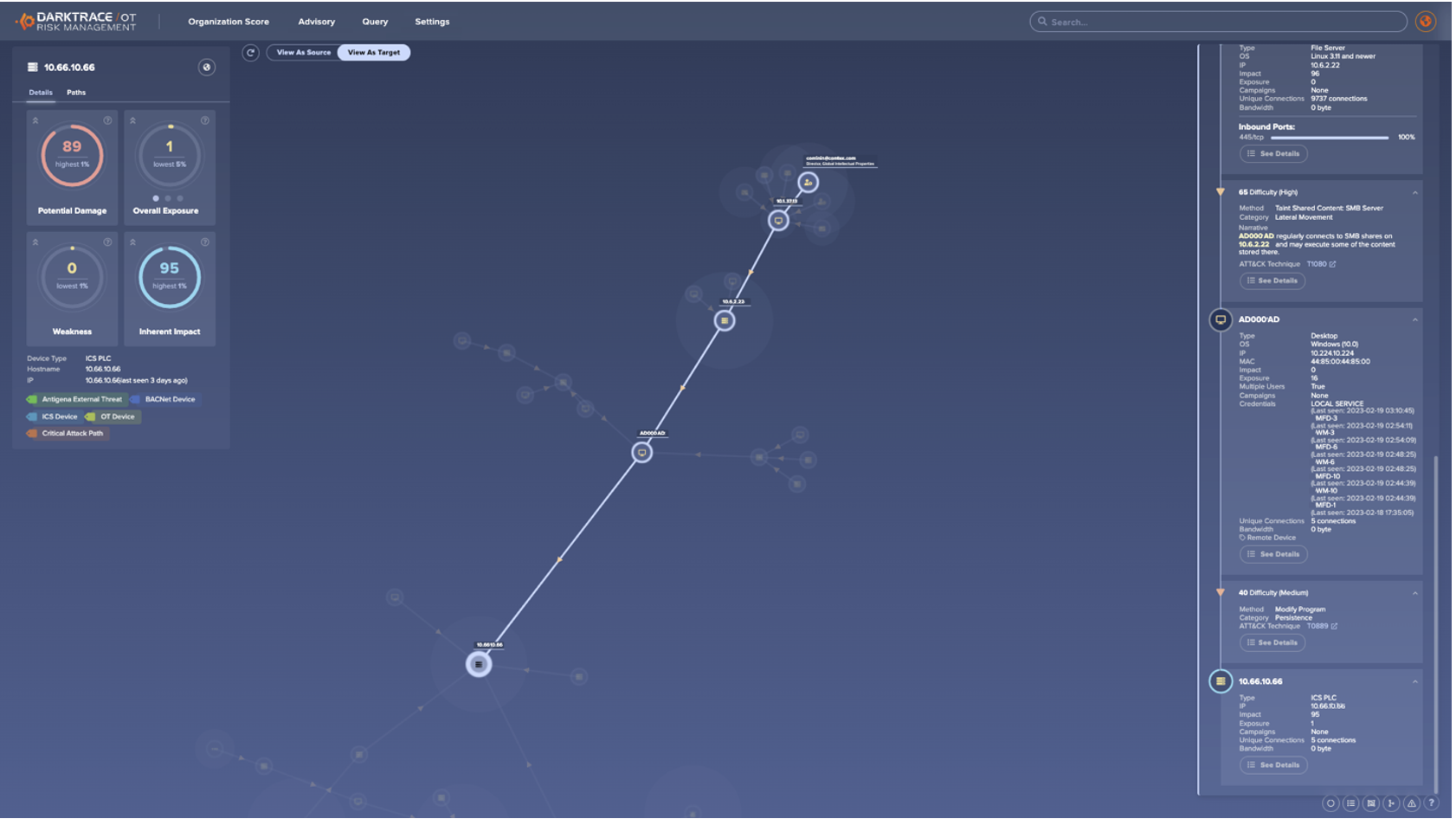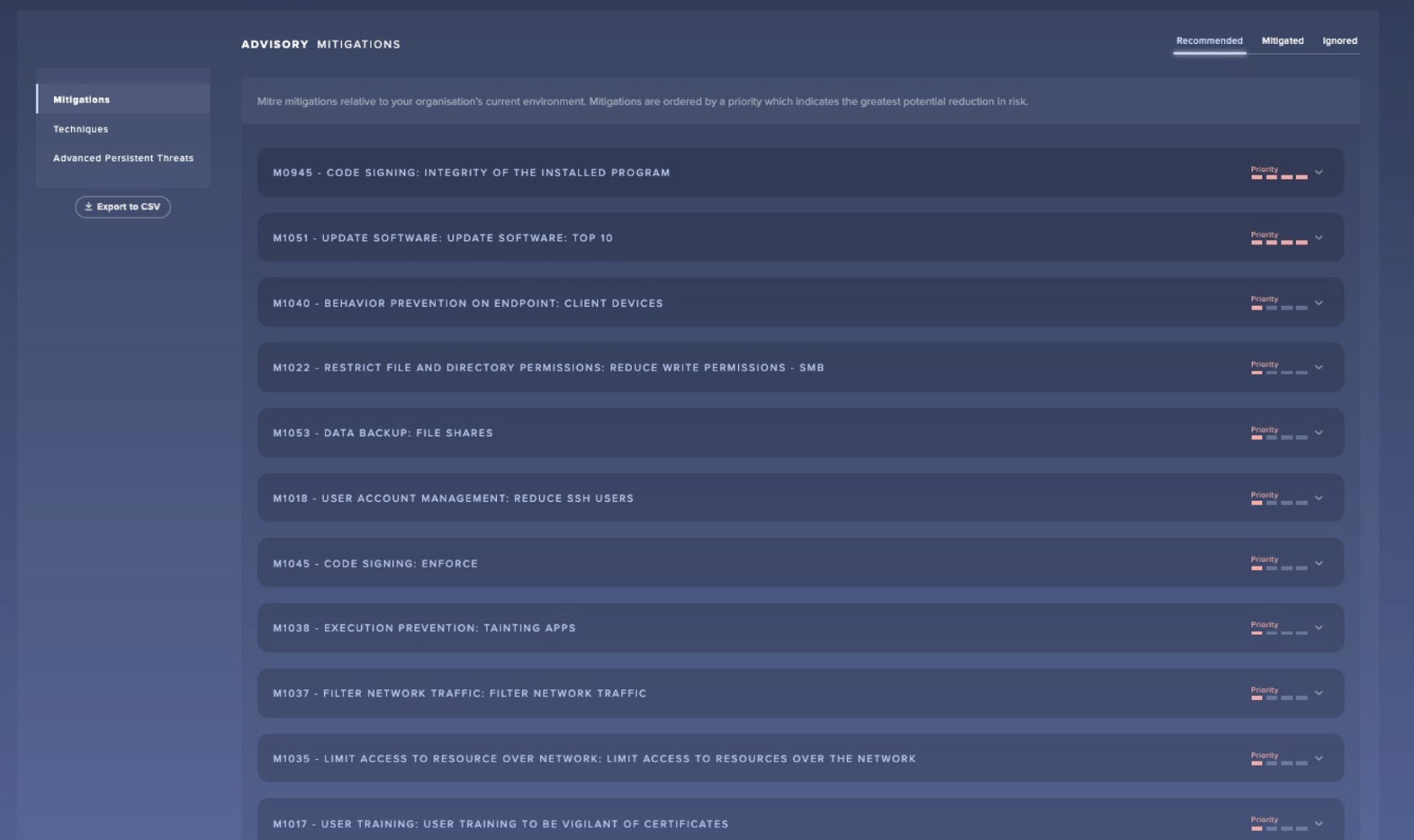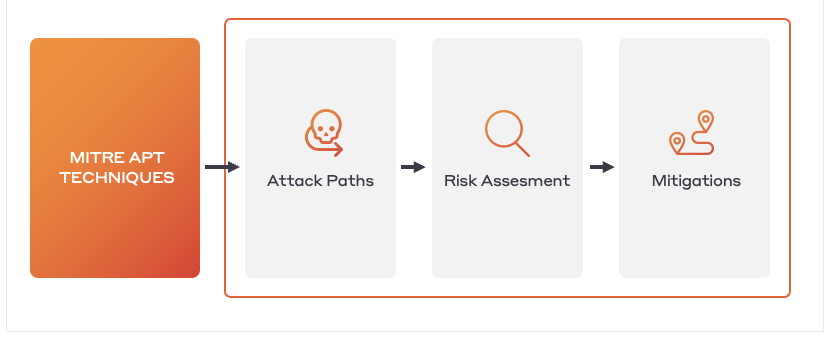Identifying Cyber Risk in Industrial Organizations
Compromised OT devices in ICS and SCADA environments pose significant physical risks, even endangering lives. However, identifying CVEs in the multitude of complex OT devices is labor-intensive and time-consuming, draining valuable resources.
Even after identifying a vulnerability, implementing a patch presents its own challenges limited maintenance windows and the need for uninterrupted operations strain IT and OT teams often leading organizations to prioritize availability over security leading vulnerabilities remaining unresolved for over 5 years on average. (1)
Darktrace’s New Innovation
Darktrace is an industry leader in cybersecurity with 10+ years of experience securing OT environments where we take a fundamentally different approach using Self-Learning AI to enhance threat detection and response.
Continuing to combat the expanding threat landscape, Darktrace is excited to announce new capabilities that enable a contextualized and proactive approach to managing cyber risk at industrial organizations.
Today we launch an innovation to our OT Cybersecurity solution, Darktrace/OT, that will add a layer of proactivity, enabling a comprehensive approach to risk management. This industry leading innovation for Darktrace/OT moves beyond CVE scores to redefine vulnerability management for critical infrastructure, tackling the full breadth of risks not limited by traditional controls.
Darktrace/OT is the only OT security solution with comprehensive Risk Management which includes:
- Contextualized risk analysis unique to your organization
- The most realistic evaluation and prioritization of OT risk
- Effectively mitigate risk across your OT infrastructure, with and without patching.
- The only OT security solution that evaluates your defenses against Advanced Persistent Threat (APT) Groups.
The most comprehensive prevention, detection, and response solution purpose built for Critical Infrastructures
Darktrace’s Self-Learning AI technology is a cutting-edge innovation that implements real time prevention, detection, response, and recovery for operational technologies and enables a fundamental shift from the traditional approach to cyber defense by learning a ‘pattern of life’ for every network, device, and user.
Rather than relying on knowledge of past attacks, AI technology learns what is ‘normal’ for its environment, discovering previously unknown threats by detecting subtle shifts in behavior. Through identifying these unexpected anomalies, security teams can investigate novel attacks, discover blind spots, have live time visibility across all their physical and digital assets, and reduce time to detect, respond to, and triage security events.
- Achieve greater visibility of OT and IT devices across all levels of the Purdue Model.
- The industry's only OT security to scale threat detection and response, with a 92% time saving from triage to recovery.
- The only OT focused security solution to provide bespoke Risk Management.
To learn more about how Darktrace/OT approaches unique use cases for industrial organizations visit the Darktrace/OT Webpage or join us LIVE at a city near you.
Read more below to discover how new innovations to Darktrace/OT are bringing a new, contextualized approach to Risk Management for Industrial organizations.
For more information on the entire Darktrace/OT Solution read our solution brief here.
Darktrace/OT and New Risk Management
Risk Identification
Leveraging the visibility of Darktrace/OT which identifies individual systems throughout the Purdue Model and the relationship between them, Darktrace/OT identifies high-risk CVEs and presents potential attack routes that go beyond techniques requiring a known exploit, such as misuse of legitimate services. Each attack path will have a mathematical evaluation of difficulty and impact from initial access to the high value objectives.
Together this gives comprehensive coverage over your real and potential risks from both an attacker and known vulnerability perspectives. OT attack paths as seen here even leverage insights between the industrial and corporate communications to reveal ways threat actors may take advantage of IT-OT convergence. This revelation of imperceptible risks fills gaps in traditional risk analysis like remote access and insider threats.


Risk Prioritization
Darktrace/OT prioritizes remediations and mitigations based on difficulty and damage to your unique organization, using the established Attack Paths.
We ascertain the priorities that apply to your organization beyond pure theoretical damage answering questions like:
- How difficult is a particular vulnerability to exploit considering the steps an attacker would require to reach it?
- And, how significant would the impact be if it was exploited within this particular network?
This expanded approach to risk prioritization has a much more comprehensive evaluation of your organization's unique risk than has ever been possible before. Traditional approaches of ranking only known vulnerabilities with isolated scores using CVSS and exploitability metrics, often leaves gaps in IT-OT risks and is blind to legitimate service exploitation.

Darktrace provides mitigation strategies associated with each identified risk and the relevant impact it has on your overall risk posture, across all MITRE ATT&CK techniques.
What sets Darktrace apart is our ability to contextualize these mitigations within the broader business. When patching vulnerabilities directly isn’t possible, Darktrace identifies alternative actions that harden attack paths leading to critical assets. Hardening the surrounding attack path increases the difficulty and therefore reduces the likelihood and impact of a breach.
That means unpatched vulnerabilities and vulnerable devices aren’t left unprotected. This also has an added bonus, those hardening techniques work for all devices in that network segment, so apply one change, secure many.

Communicate Board Level Risk with APT Threat Mapping
Darktrace/OT bridges theory and practice as the only security solution that maps MITRE techniques, frequently used by APT Groups, onto AI-assessed critical Attack Paths. This unique solution provides unparalleled insights including sector and location intelligence, possible operating platforms, common techniques, exploited CVEs, and the number of potential devices affected in your environment, supporting holistic risk assessment and proactive defense measures.
Ultimately, this becomes a power dashboard to communicate board level risk, using both metric based evidence and industry standard threat mapping.

Conclusão
Darktrace/OT is part of the Darktrace ActiveAI Security Platform a native, holistic, AI-driven platform built on over ten years of AI research. It helps security teams shift to more a productive mode, finding the known and the unknown attacks and transforming the SOC with the various Darktrace products to drive efficiency gains. It does this across the whole incident lifecycle to lower risk, reduce time spent on active incidents, and drive return on investment.
Discover more about Darktrace's ever-strengthening platform with the upcoming changes coming to our Darktrace/Email product and other launch day blogs.
Join Darktrace LIVE half-day event to understand the reality versus the hype surrounding AI and how to achieve cyber resilience.
Learn about the intersection of cyber and AI by downloading the State of AI Cyber Security 2024 report to discover global findings that may surprise you, insights from security leaders, and recommendations for addressing today’s top challenges that you may face, too.
References
1. https://research-information.bris.ac.uk/ws/portalfiles/portal/313646831/Catch_Me_if_You_Can.pdf































![Darktrace DETECT model alert highlighting the use of a remote management tool, namely “screenconnect[.]com”.](https://assets-global.website-files.com/626ff4d25aca2edf4325ff97/663e65c6b0ee97378e4509af_Screenshot%202024-05-10%20at%2011.21.43%20AM.png)
![Figure 2: Darktrace DETECT model alert highlighting the unusual connection to 185.62.58[.]132 via port 8041.](https://assets-global.website-files.com/626ff4d25aca2edf4325ff97/663e66b4de1b5491cb1af256_Screenshot%202024-05-10%20at%2011.22.47%20AM.png)
![Figure 3: Darktrace DETECT model alert highlighting connections to 108.61.210[.]72 using a new user agent and the “/MyUserName_DEVICEHOSTNAME” URI.](https://assets-global.website-files.com/626ff4d25aca2edf4325ff97/663e66d3c53f1631e9d6f3ec_Screenshot%202024-05-10%20at%2011.23.04%20AM.png)
![Figure 4: Darktrace DETECT model alert highlighting the download of an unusual executable file from 116.0.56[.]101.](https://assets-global.website-files.com/626ff4d25aca2edf4325ff97/663e671300e1a5b26483fcea_Screenshot%202024-05-10%20at%2011.27.20%20AM.png)


![Figure 7: Darktrace RESPOND blocking connections to the suspicious endpoint 116.0.56[.]101 and “*.56.101” following the download of the suspicious AnyDesk installer.](https://assets-global.website-files.com/626ff4d25aca2edf4325ff97/663e67ff976d5b71245b32a4_Screenshot%202024-05-10%20at%2011.31.17%20AM.png)







